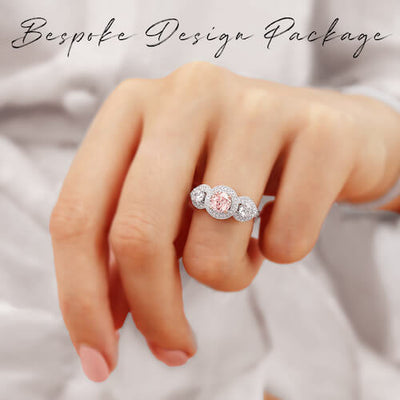In recent years, fast fashion has taken the global fashion industry by storm, reshaping the way clothes are designed, produced, and consumed. This rapid manufacturing model, which thrives on providing inexpensive, trend-driven clothing at an unprecedented pace, has significantly impacted several sectors, including the jewelry industry. Traditionally seen as a domain for luxury and craftsmanship, the jewelry industry from the collection of Lily Arkwright has also witnessed profound transformations, influenced by the speed, accessibility, and affordability that fast fashion has brought to the forefront.
The Rise of Fast Fashion and Its Impact on Jewelry
Fast fashion, a term used to describe the mass production of inexpensive clothing based on the latest fashion trends, has revolutionized how consumers approach style. Retailers like Zara, H&M, and Forever 21 have pioneered this approach, constantly updating their product offerings with trendy pieces that reflect runway styles and celebrity influences. This speed-driven model has extended to the jewelry sector, where traditional, handcrafted pieces are increasingly replaced with mass-produced accessories that emulate the latest trends.
The primary effect of fast fashion on the jewelry industry is the mass production of affordable, trend-based jewelry. The fast fashion model encourages brands to churn out jewelry collections that are inspired by high-end fashion but at a fraction of the cost. The result is the proliferation of costume jewelry – pieces made from cheaper metals, synthetic stones, and minimal craftsmanship. These products are often sold at accessible price points, making them appealing to a wider range of consumers who may not typically invest in fine jewelry.
The Democratization of Jewelry: More Access, Less Investment
One of the most notable impacts of fast fashion on jewelry is the democratization of style. In the past, jewelry was primarily associated with high-end luxury, with consumers needing to make a significant financial commitment to purchase fine pieces. However, fast fashion has made it possible for anyone to experiment with jewelry and embrace trends without breaking the bank.
This has led to a shift in how consumers view jewelry. Instead of purchasing timeless, high-quality pieces to wear for decades, many are now opting for trendy accessories that they can wear for a season or two and then discard. The focus has shifted from investment pieces to disposable, trendy accessories that serve more as a means of self-expression for the moment. The widespread availability of inexpensive jewelry has fostered an environment where the idea of “fast jewelry” – accessories that are worn briefly and replaced frequently – has become a norm.
Impact on Traditional Jewelry Brands
For traditional jewelry brands, this shift has been both an opportunity and a challenge. On one hand, the rise of fast fashion has created a new market for more affordable jewelry, and many established brands have adapted by launching lower-priced collections to cater to younger consumers. On the other hand, fast fashion’s focus on speed and affordability has posed a threat to the market for high-quality, handcrafted pieces that take time and skill to produce.
Many traditional jewelers have responded by emphasizing craftsmanship, exclusivity, and the longevity of their products. They are positioning themselves as the antithesis to the fast fashion model, highlighting the value of heirloom-worthy pieces made from precious metals and gemstones. For these brands, the challenge lies in maintaining relevance in a marketplace increasingly driven by immediacy and lower price points.
Sustainability Concerns
While the fast fashion industry has been widely criticized for its environmental impact, the jewelry sector is not immune to similar concerns. The production of cheap jewelry often relies on materials that are mined with little regard for environmental sustainability, and the use of synthetic stones and low-quality metals can have long-lasting negative effects on ecosystems. Additionally, the quick turnover of trendy jewelry encourages a culture of disposability, contributing to a growing issue of waste in the fashion and jewelry industries.
In response to these concerns, some jewelry brands are beginning to integrate sustainability into their practices. Ethical sourcing, eco-friendly materials, and transparent production processes are gaining popularity among consumers who want to ensure that their jewelry choices do not harm the planet. Some fast fashion jewelry brands are even beginning to incorporate recycled metals and ethically sourced gemstones into their lines, signaling a shift toward more sustainable practices in the industry.
The Future of Jewelry in the Age of Fast Fashion
As fast fashion continues to influence the jewelry industry, it is clear that the lines between fine and costume jewelry are becoming increasingly blurred. While consumers still value high-quality, timeless pieces, the demand for affordable, trend-driven accessories shows no signs of waning. Jewelry brands, both traditional and new, will need to balance the speed of fast fashion with the value of craftsmanship and sustainability.
In the long term, the jewelry industry may see a shift toward a hybrid model, where pieces are designed with both style and sustainability in mind. Fast fashion’s influence on the jewelry sector will likely continue to evolve, but one thing is certain: jewelry will remain a key part of fashion, reflecting our ever-changing tastes, values, and priorities.
In conclusion, fast fashion has reshaped the jewelry landscape by driving the demand for affordable, trend-driven accessories. While this has made jewelry more accessible to the masses, it has also raised concerns about quality, sustainability, and the long-term value of these pieces. As the industry continues to evolve, it will be essential for both fast fashion and traditional jewelry brands to adapt to new consumer expectations while embracing more sustainable practices. The future of jewelry in the fast fashion era is one of transformation, innovation, and, hopefully, a more responsible approach to production and consumption.

